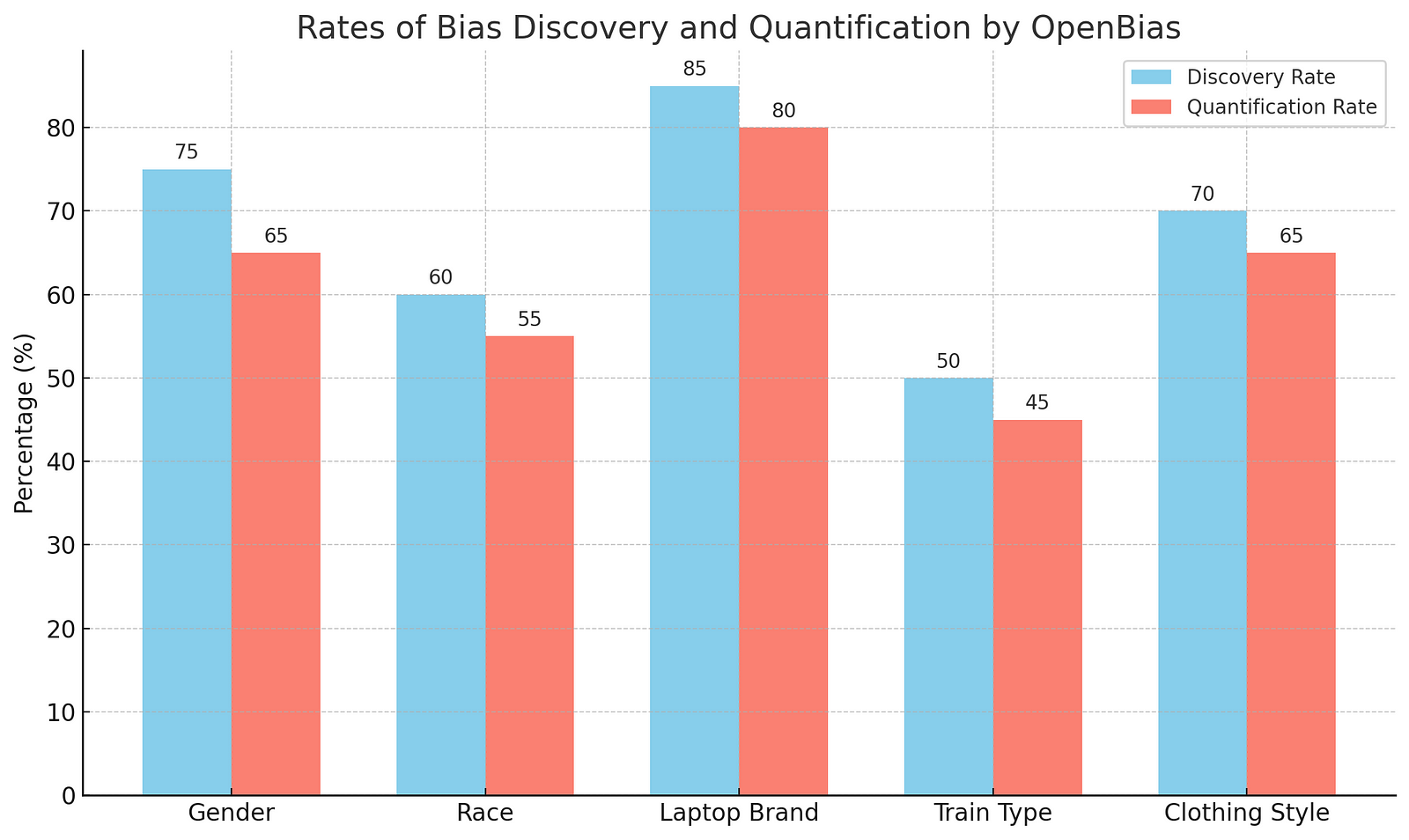
The recent surge in the popularity of text-to-image generative models has revolutionized how we interact with digital content, making it more intuitive and personalized. These advancements, however, come with their own set of challenges, chiefly the inadvertent perpetuation of biases. The groundbreaking “OpenBias” framework shifts the paradigm from closed, predefined biases to an open-set approach, ensuring fairness by detecting unseen biases dynamically. This novel approach is not just an upgrade — it’s a transformative leap in making AI impartial and universally accessible.
A New Frontier in Bias Detection
Traditionally, bias detection in AI has been limited to known, predefined categories. OpenBias introduces a game-changing methodology that eschews this limitation. By employing a Large Language Model (LLM) to propose biases from textual inputs, and a Vision Question Answering (VQA) system to analyze the resulting images, OpenBias is capable of recognizing and quantifying biases that were previously undetectable. This method doesn’t just identify biases; it quantifies their impact, thereby providing a clearer path to unbiased AI solutions.
The Open-set Approach
OpenBias operates under an open-set scenario, where biases are not predefined but are proposed based on the content at hand. This flexibility allows it to discover and address biases that are context-specific and often overlooked in conventional models. For example, the model might identify and correct biases related to less obvious characteristics like the brand of a laptop or the type of train in an image, which are usually not covered under standard bias checks.
Here’s a graph below to help explain the concept of bias discovery and quantification in AI as discussed in the article:

Real-world Applications and Impact
The practical applications of OpenBias are vast and varied. From improving the fairness of automated systems in public and private sectors to enhancing the creativity and inclusiveness of digital media, the implications are profound. In education, this technology can provide unbiased educational tools that represent diversity accurately. In media, it can ensure fair representation across all narratives, making digital interactions more equitable.
Towards a Bias-Free Digital World
As OpenBias continues to evolve, its potential to influence various industries is enormous. By ensuring that AI systems produce fair and unbiased outputs, this technology can help in building a more equitable society. Moreover, as this framework is open-source, it encourages global collaboration, making it possible for developers worldwide to contribute to and benefit from this innovative approach.
Modular and Scalable Technology
OpenBias’s modular design allows each of its components to be updated independently as advancements are made, ensuring that it remains at the cutting edge of technology. This adaptability makes it an ideal solution for various applications, ranging from small-scale projects to large-scale deployments.
First of Its Kind
OpenBias is the first pipeline to tackle the problem of bias detection without relying on a predefined list of biases. This pioneering approach allows for the discovery of novel biases that have never been studied before, marking a significant milestone in the quest for fair AI.
Alignment with Human Judgment
In tests, OpenBias has shown remarkable alignment with human judgment, demonstrating its efficacy not just in theoretical models but in practical, real-world scenarios as well. This makes it a reliable tool for developers and researchers aiming to create more equitable AI systems.
Foundation Model Integration
By integrating seamlessly with other foundation models, OpenBias can leverage their capabilities to enhance its own performance. This integration allows for a more comprehensive analysis and understanding of biases, leading to more effective mitigation strategies.
Ethical AI Promotion
OpenBias not only detects biases but also promotes ethical AI practices by making its findings and methodologies public. This transparency helps in fostering a community of developers committed to creating unbiased AI, paving the way for more responsible technology development.
Conclusion
As we stand on the brink of a new era in digital technology, OpenBias presents a beacon of hope. Its innovative approach to detecting and quantifying biases in text-to-image generative models heralds a future where digital content can be created free of inherent prejudices, reflecting the true diversity of human experience. This technology does not just refine existing systems — it redefines the possibilities of fair and ethical AI. For young minds looking towards a career in technology, OpenBias offers a glimpse into the impactful and meaningful work that awaits in the pursuit of a more equitable digital future.
About Disruptive Concepts
https://www.disruptive-concepts.com/
Welcome to @Disruptive Concepts — your crystal ball into the future of technology. 🚀 Subscribe for new insight videos every Saturday!
Comments
Post a Comment